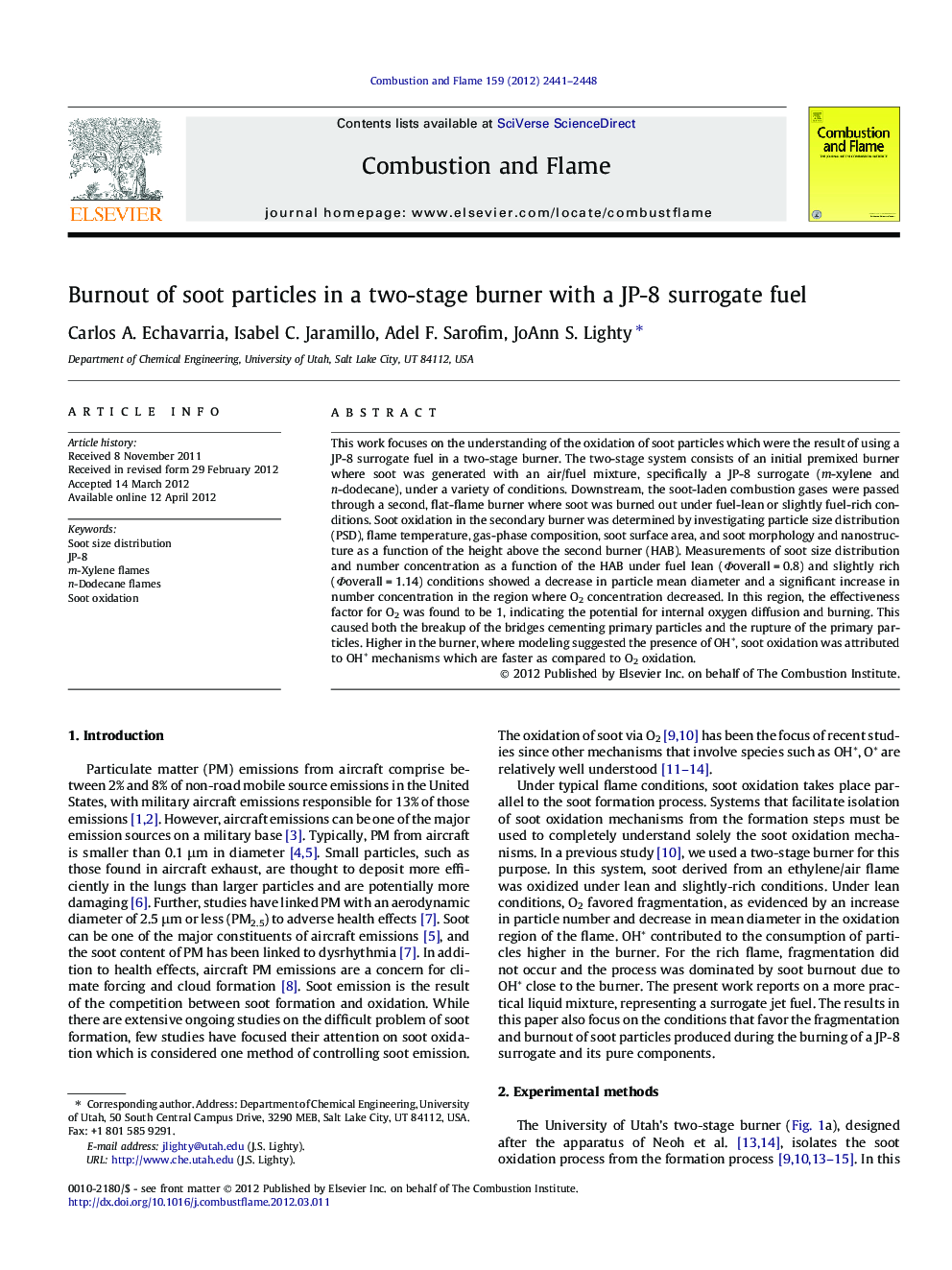| کد مقاله | کد نشریه | سال انتشار | مقاله انگلیسی | نسخه تمام متن |
|---|---|---|---|---|
| 10264693 | 457968 | 2012 | 8 صفحه PDF | دانلود رایگان |
عنوان انگلیسی مقاله ISI
Burnout of soot particles in a two-stage burner with a JP-8 surrogate fuel
دانلود مقاله + سفارش ترجمه
دانلود مقاله ISI انگلیسی
رایگان برای ایرانیان
کلمات کلیدی
موضوعات مرتبط
مهندسی و علوم پایه
مهندسی شیمی
مهندسی شیمی (عمومی)
پیش نمایش صفحه اول مقاله

چکیده انگلیسی
This work focuses on the understanding of the oxidation of soot particles which were the result of using a JP-8 surrogate fuel in a two-stage burner. The two-stage system consists of an initial premixed burner where soot was generated with an air/fuel mixture, specifically a JP-8 surrogate (m-xylene and n-dodecane), under a variety of conditions. Downstream, the soot-laden combustion gases were passed through a second, flat-flame burner where soot was burned out under fuel-lean or slightly fuel-rich conditions. Soot oxidation in the secondary burner was determined by investigating particle size distribution (PSD), flame temperature, gas-phase composition, soot surface area, and soot morphology and nanostructure as a function of the height above the second burner (HAB). Measurements of soot size distribution and number concentration as a function of the HAB under fuel lean (Φoverall = 0.8) and slightly rich (Φoverall = 1.14) conditions showed a decrease in particle mean diameter and a significant increase in number concentration in the region where O2 concentration decreased. In this region, the effectiveness factor for O2 was found to be 1, indicating the potential for internal oxygen diffusion and burning. This caused both the breakup of the bridges cementing primary particles and the rupture of the primary particles. Higher in the burner, where modeling suggested the presence of OH*, soot oxidation was attributed to OH* mechanisms which are faster as compared to O2 oxidation.
ناشر
Database: Elsevier - ScienceDirect (ساینس دایرکت)
Journal: Combustion and Flame - Volume 159, Issue 7, July 2012, Pages 2441-2448
Journal: Combustion and Flame - Volume 159, Issue 7, July 2012, Pages 2441-2448
نویسندگان
Carlos A. Echavarria, Isabel C. Jaramillo, Adel F. Sarofim, JoAnn S. Lighty,